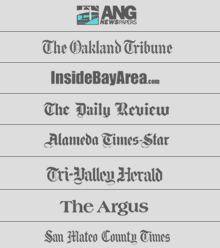|
|
|
|
|
|
|
|
|
|
|
|
|
|
 |
 |
|
| Cheryl North :: Articles | ||
|
ANG Newspapers, published July 2, 2004 A couple of classical music organizations will present concerts to add some flash and dash to the Bay Area's Fourth of July celebrations this coming week. These events, in addition to baseball games, concert openings, and other assorted public events, will involve performances of that great all-American favorite, The Star-Spangled Banner. So, it's time to start stretching and exercising the old vocal cords. After all, it takes a certain degree of vocal fitness to hit all the notes and properly sing our nation's signature song. Our National Anthem's stirring words can speed up our pulses and bring tears to our eyes -- but its melody strains most American vocal cords to capacity. Think how many of us drop out on the line that begins "and the rockets' red glare...." The reason is that the word "glare" and the word "free" in the last line both require a vocal leap 12 notes higher than the song's lowest note -- a mighty stretch for most of us. Francis Scott Key, a chap who was born in Frederick, Maryland in 1779, is responsible for the words. But the tune to which Key matched his words' meter was To Anacreon in Heaven, a piece composed about 1780 as the official song of the Anacreontic Society, a British social and musical organization. Key must have been a pretty good singer with a broad range, since he had used the same tune back in 1805 to accompany another of his poems, an ode to honor Commodore Stephen Decatur. Although he was indeed considered a fine poet, by 1805 he had established a law practice in Georgetown Maryland. By 1814, he had appeared many times before the U.S. Supreme Court. His brother-in-law, Roger Brooke Taney, was eventually named as the Supreme Court's Chief Justice and as such, administered the oath of office to Abraham Lincoln in 1861. But Key's enduring place in the history of our country was secured when he set his patriotic passion into verse after watching the British onslaught of Fort McHenry during the War of 1812. According to the historical record, Key's friend, Dr. William Beanes, was taken prisoner by the British army soon after its departure from Washington in August of 1814. Key left for Baltimore to obtain the services of Colonel John Skinner, the government's prisoner-of-war exchange agent, to aid him in securing the release of Dr. Beanes. Together they sailed on a truce ship down the bay and met the British fleet. They successfully negotiated the doctor's release, but all three were then detained by the British until after the attack on Baltimore. Key stood watch through the night from the deck of a British ship anchored about eight miles below the fort during its bombardment. It was from this site that, "the rockets' red glare, the bombs bursting in air," finally gave him "proof through the night" that the flag was indeed "still there," flying high and victorious, over the fort. During the night, the British had fired nearly 1,800 bombs, rockets and shells at the Fort, with about 400 of them landing inside. As the day's early light dawned, Key penned his feelings of thrill and relief on the back of an envelope. As the British fleet withdrew, Key and his cohorts were sent ashore. The next day, in a hotel, he made a good copy of his poem and showed it to some of his wife's Baltimore relatives. They immediately had it printed and distributed throughout the city on a handbill entitled "The Defense of Fort McHenry." A couple of weeks later it was published in Baltimore newspapers, and under the name, The Star-Spangled Banner, gained enthusiastic popularity. An actor-singer then sang it, using the English tune to which Key had matched its meter, at a public performance. During the Civil War, with both Union and Confederate forces rallying to its strains, Key's creation became nationally popular. However, it took several more decades, another war, and the Great Depression for it to be named the official anthem of the United States. President Herbert Hoover signed the Congressional bill proposing that it be so, into law on March 3, 1931. There were, and have remained to this day, other musical contenders for the honor of National Anthem. Among them are America the Beautiful, Yankee Doodle, God Bless America, America (aka God Save the Queen), all of which, for average folks, seem a little more singable. However, none better capture the fervor of America's great promise, to remain "the land of the free and the home of the brave!" than does The Star-Spangled Banner. Perhaps the difficult range of notes through which we must struggle in order to sing it remind us of the difficulties through which we must struggle to maintain the United States as the honorable land of the free and the home of the brave!
|

|